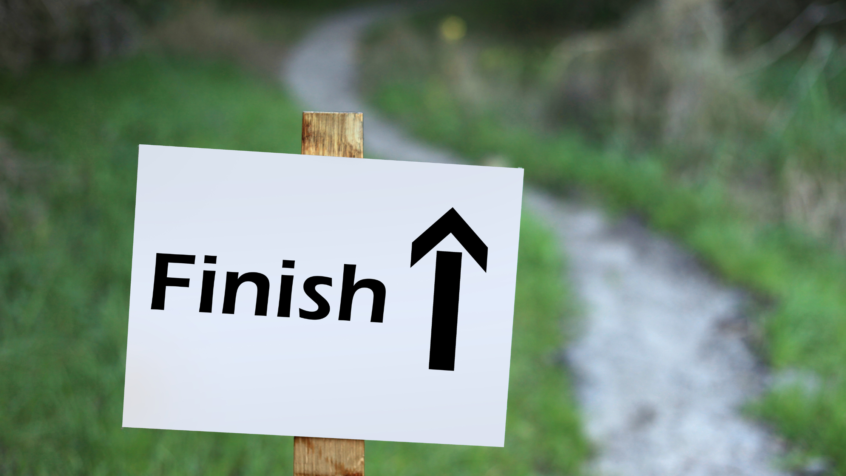I ran a marathon years ago. Around mile 18, I wasn’t sure I was going to make it.
The Austin Marathon has a predictable course. It’s basically a big loop from downtown going south, then turning north going all the way past downtown until runners turn south again to head toward the finish line downtown.
I hit “the wall” somewhere around mile 18. My legs kind of gave out and my body just screamed, “okay, we’re done here.” I pressed on, albeit in pain and slower.
Somewhere around mile 20ish I made the right hand turn and started heading south. I thought I was on the home stretch going back toward downtown. I could see the buildings peeking out over the trees. My legs hurt less, my spirit was raised.
Until the course turned back north. I was crushed. We were going AWAY from the finish line. I turned into a victim really quick. “How could they do this to me?? Why did they have to turn me north!?!” I was demoralized because I saw my progress toward the goal – finishing the race – go away.
Thankful in roughly a 1/2 mile, I was once again turned south and started heading back toward downtown. As I got closer to downtown, I started feeling better. My legs started moving faster, my body didn’t hurt as much, I actually picked up speed again the closer I got to the finish. I even pushed pretty hard on the final .2 of the 26.2 mile race up pretty steep hills. With the finish line in my sight, I ran as fast I could through the line. I was a finisher!
My goal was to finish the race. I realized that when I could literally see the tops of the downtown buildings, my motivation spiked and my pain was less.
This “phenomenon” is backed by science. It’s referred to as the goal gradient hypothesis. It says the closer you believe you are to achieving your goal, the harder you work to finish the goal.
What rodents can teach us
Various experiments for nearly 80 years have repeatedly shown that the perceived proximity to a goal increases the amount of resources used to achieve a goal.
The first of these experiments were conducted with rats & mice dating back to the 1940s. Researchers taught the mice how to complete a maze. Then they deprived the mice of food & water and then sent them back through the maze with depleted physical resources to get the food & water reward. What they found is that the closer the mice got to the finish, the faster they ran to get the food & water reward.
The proximity to the reward motivated the mice to expend even more energy than when they were relatively “fresher” at the start.
That’s great for the mice, but what about me?
Recent research on the subject of sight perception toward a goal with humans shows even more remarkable results.
In one study from NYU, researchers put ankle weights on two different groups of people and asked them to “high step” toward a finish line.
Each participant was given ankle weights proportionate to how much they weighed and no classification was given based on how in shape someone was.
The only difference between the groups is that “Group A” received a tutorial around how to focus their visual attention on the finish line during the exercise. As they got closer to the end, they were instructed to notice the finish getting closer (similar to the mice and similar to me in the marathon).
With just this one bit of instruction, “Group A” completed the exercise 27% faster than control group “Group B” who were given no such instruction. Even more interesting is that “Group A” reported 17% less pain than “Group B.”
By focusing on the perception of the goal getting closer, “Group A” achieved it faster with a less painful experience. Pretty amazing results from simply adjusting their visual focus.
How to apply this to my life
If the goals we have are meaningful, they are likely hard. We are stretched and pushed. Similar to high stepping with ankle weights. We are likely to experience fatigue and pain, which can slow our momentum or even stop us altogether.
If we can break down our big goals to smaller goals and create a visual system such that we can see ourselves getting closer to those smaller goals, we’ll perform just like “Group A.” We’ll go faster with less pain.
Our goals for 2023 are one year away. It feels far away. Create smaller goals – weekly or month – and a visual system that shows you how close you are to hitting those goals. The visual cue and perception will cause you to want to push hard to achieve those smaller goals.
When you see the end – just like the mice, the high steppers and me – you’ll go faster with more joy in your step!

